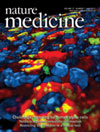 Regulatory authorities such as the US Food and Drug Administration and European Medicines Agency face continual criticism for their plodding pace of drug approval decisions. In 2009, the last year for which complete data are available, the median time for a standard review of a drug application in the US was 13 months—30% longer than the agency’s target for such reviews. But even with this situation, it’s undeniable that both agencies devote far more human and financial resources to the process than most other countries can afford to spend on their own.
Regulatory authorities such as the US Food and Drug Administration and European Medicines Agency face continual criticism for their plodding pace of drug approval decisions. In 2009, the last year for which complete data are available, the median time for a standard review of a drug application in the US was 13 months—30% longer than the agency’s target for such reviews. But even with this situation, it’s undeniable that both agencies devote far more human and financial resources to the process than most other countries can afford to spend on their own.
To keep up, many other medical regulatory authorities are banding together with one another to share the expertise and clinical results needed to make faster decisions. On 20 June, for example, New Zealand’s Prime Minister John Key announced that the establishment of the Australia New Zealand Therapeutic Products Agency—stalled for several years—would proceed as planned. And, the month before, as the World Health Organization (WHO) held its annual assembly in Geneva, a concurrent meeting of health ministers from countries in the Gulf Cooperation Council approved pricing standards for drugs in its six member states from across the Arabian Peninsula.
“There is increasing cooperation and work sharing between regulators,” says Lembit Rägo, coordinator of Quality Assurance and Safety for Medicines at the WHO in Geneva and author of an April 2011 report on international harmonization of regulatory efforts (Clin. Pharmacol. Ther. 89, 503–512, 2011).
Delays are often worst in what the WHO calls “less-resourced countries,” because in some cases those countries wait until a trusted authority such as the FDA or EMA has approved a drug before making a decision. The WHO has estimated that 90% of drug regulatory agencies in sub-Saharan Africa faced circumstances that hindered their function and could impede their ability to guarantee the safety of medicines within their borders.
To make the situation even more daunting, many drugs that have potential use in developing countries—such as those for tropical disease—may not be priorities in North America and Europe. As such, they face longer delays between development and reaching their target markets.
What’s more, drug approvals in one part of the world are not always applicable elsewhere, as the case of Sanofi’s Priftin (rifapentine) shows. The FDA approved the French drugmaker’s tuberculosis drug on the basis of clinical trials that excluded HIV-affected individuals, even though these are the people who would constitute 70% of the sub-Saharan African market, according to a recent paper calling for more coordinated review of medicines for neglected disease (PLoS Med. 8, e1000411, 2011). “Streamlining and coordinating regulatory approval could bring new medicines—and better health—to literally millions of patients in the developing world,” says lead study author Mary Moran of Policy Cures, a health-policy analysis firm in Sydney.
Hoping for harmony
When it comes to the matter of regulatory collaboration, the East African Community may be furthest along among regional efforts in Africa. Its harmonization initiative held a startup meeting in 2007 in Geneva to adapt regulatory guidelines from the WHO. Despite holdups, last year its members won a one-year pilot grant from the Bill & Melinda Gates Foundation to launch a program for consolidating the technical requirements makers of new drugs must submit for approval, among other efficiencies. The New Partnership for Africa’s Development, an economic growth program of the African Union, has also been coordinating an initiative within the continent since 2008, with the goal of speeding drug registration.
Countries that would share their drug approval processes face other challenges, such as establishing common standards for laboratory quality control and agreeing on how to review the post-marketing efficacy of a drug. To streamline drug reviews, most wealthy countries are parties to the International Conference on Harmonisation of Technical Requirements for Registration of Pharmaceuticals for Human Use (ICH), a set of guidelines developed by pharmaceutical makers and government regulators. For even more help, some participate in separate work-sharing agreements, such as Switzerland, Canada, Australia and Singapore, who signed one in 2006.
New Zealand has taken this one step further. In 2008, the country elected to recognize some regulatory decisions from other countries rather than complete full evaluations. At the time, its regulatory agency, the Medicines and Medical Devices Safety Authority (Medsafe), had a backlog of 360 drug applications, including those for both new and generic medicines, and took more than three years to complete an approval on average, according to a presentation by Medsafe group manager Stewart Jessamine at the International Conference of Drug Regulatory Authorities meeting in Singapore last November.
Devoting its resources to the generic drugs that make up most New Zealand applications allowed Medsafe to refer over 60% of new medicines to the abbreviated approval process, which takes fewer than 200 days on average. “The preferred strategic solution, however, is that Medsafe join with the Therapeutic Goods Administration of Australia,” Jessamine says, a merger delayed since 2007 that will now resume.
Pharmaceutical producers welcome a unified regulatory environment. “This is where it’s moving to,” says Paul Herrling, head of the Novartis Institutes for Developing World Medical Research in Basel.